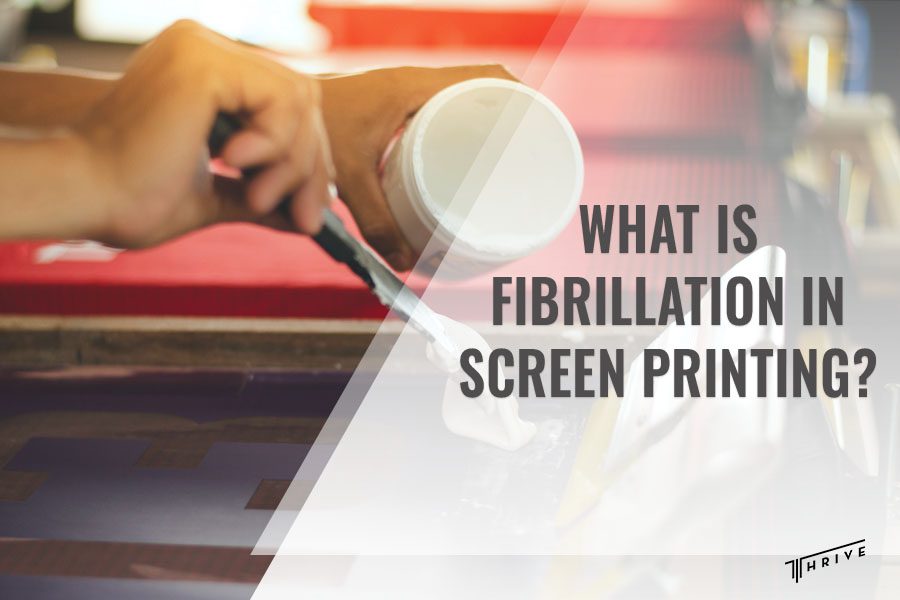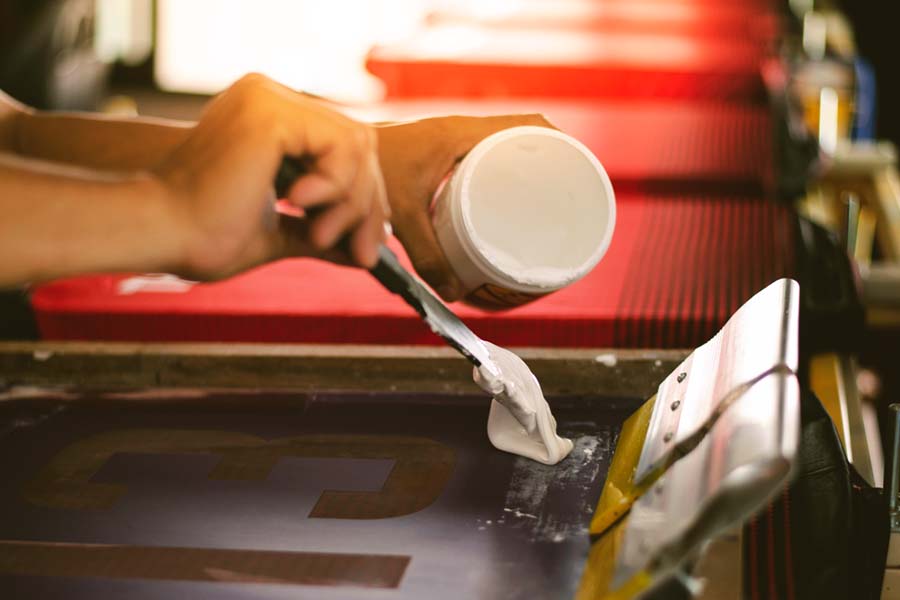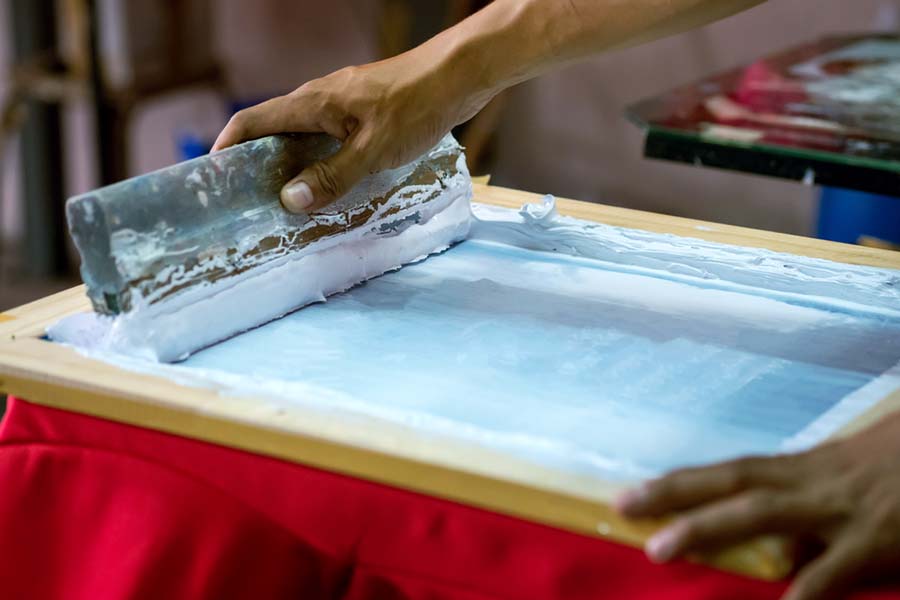
Fibrillation in screen printing is a phenomenon that many printers encounter unexpectedly, especially novice ones. This is why it is essential to learn about fibrillation and how to prevent it. So, what is fibrillation in screen printing?
This guide explores fibrillation in screen printing and what causes this occurrence. It holds detailed information on how to prevent fibrillation screen printing and may educate printers on selecting the right garments, ink types, etc.
What Is Fibrillation in Screen Printing?
Many novice printers are often surprised when fibrillation appears on their printing garments. While most likely know what fibrillation looks like, many might be unfamiliar with the term.
In short, fibrillation causes garment fibers to become loose and visible through the pattern. The garments look faded and fuzzy, and many printers like to say that it gives garments a hairy-like look. While some believe fibrillation is most common in blended garments, we’re here to tell you that it can also appear on a 100% cotton T-shirt.
Additionally, fibrillation often happens when the first ink screen is applied to the garment. In turn, the following layers suffer the same effect.

How to Prevent Fibrillation in Screen Printing
Fibrillation usually causes frustration among printers, especially in wholesale clothing printing, which requires rapid turnaround times. This is why taking preventive measures is essential in avoiding wasting printing materials. It can help printers avoid wasting garments, ink, and precious time.
Adjusting screen tension
Screen tension is vital in preventing fibrillation in screen printing. Many printers make the mistake of having their screen too loose. When the screen is not tightened properly, the mesh will only touch the garment and pull the fibers while pulling back up.
There are several ways to ensure proper off-contact and avoid fibrillation. We like to have a tight screen for printing, so we use an iron squeegee. Still, the best way to ensure that the screen will not pull off the ink when coming back up is by measuring the Newtons of the screen and adjusting the screen accordingly.
Those unfamiliar with screen adjustment should know that screen tension is measured in Newtons per centimeter. A tension between 25 to 35 Newtons is optimal for most garments. However, other factors, such as mesh count, influence the exact number.
Considering ink types
Proper screen adjustment helps avoid fibrillation while choosing a suitable ink is the second most important detail. For example, water-based inks are regularly used to decrease the presence of fibrillation.
Water-based ink works by infiltrating the garment. This type of ink penetrates and adheres to the garment instantly, making it a great alternative to inks that sit on top of the texture.
Furthermore, using ink additives can offer extra protection against fibrillation. These are specially designed to glue ink onto garments and reduce fibrillation risk.
Using clear ink is another effective way to inhibit fibrillation. But how do you get rid of fibrillation screen printing by using clear ink? There are two ways of using clear ink against this occurrence.
Some prefer adding a clear ink underbase over their printing materials, while others use clear ink as a top layer over the print. However, we should note that this practice adds a glossy appearance to the print, which might not be suitable for all scenarios.
Choosing garments
While all garments can become “victims” of fibrillation, some are more susceptible than others. This is why it is important to know which garments are more prone to fibrillation.
In our opinion, the secret to producing high-quality prints is to take the time to research which kinds of garments carry a larger risk. Being aware of a material’s susceptibility provides printers the advantage since it enables them to take the appropriate safety measures and improve the print’s success.
However, the only way to determine if a garment is prone to fibrillation is by doing a test run. To do that, lay down the chosen garment and run a print. Then, put the garment through several wash and dry cycles to see if fibrillation appears.
Generally, fabrics that have a softer feel tend to fibrillate more than others. Still, it is difficult to determine if a T-shirt will fibrillate. We advise considering the available material and modifying the screen printing procedure as needed to provide a successful result.

Conclusion
What is fibrillation in screen printing? To sum up, fibrillation is the hairy-like appearance of fabrics, better said when fabric fiber sticks through the print.
So, how can you prevent fibrillation? Avoiding fibrillation requires selecting suitable materials and inks. Other practices, such as adjusting screen printing tension, may also reduce the fibrillation risk.
The key to its prevention lies in understanding its causes. This allows printers to implement preventive measures and ensures high-quality, durable prints.

Robert Fisher is the founder and CEO of Thrive Screen Printing and brings extensive experience in the screen printing and fulfillment industry.

